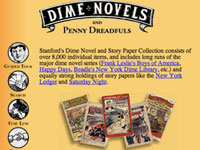Seeking U.S. History Books for 9th and 11th Graders

I am interested in locating a list of U.S. history fiction and nonfiction books that are appropriate for use with my U.S. history students, grades nine and 11.
Some of the best and most easily available sources for lists of appropriate books for 9th and 11th graders come from school districts and teachers who have compiled them and shared them on the internet.
An excellent example of this can be found at Oxnard Unified High School District. This annotated list includes both fiction and nonfiction titles related to high school U.S. history. Another example of this type of list has been posted by a classroom teacher. This list highlights nonfiction titles on a range of U.S. history topics but also includes a brief list of recommended historical fiction.
Libraries are another obvious choice for booklists. Library Booklists is a clearinghouse of public libraries across the nation, providing links to lists of books put together by librarians on diverse topics. You can search for nonfiction as well as historical fiction lists, and it differentiates between young adult and children's literature.
The American Library Association's Young Adult Library Services Association (YALSA) has annotated lists of suggestions for teen readers. Many, but not all, of their nonfiction history titles relate to U.S. history. They also have excellent annotated lists of fiction, but they do not differentiate historical fiction from general works.
Another approach to finding books would be to use a search engine to generate a personalized list on a particular topic. The reading measurement company Lexile has an online feature that can be used to search for book titles. To use Lexile, go to Find a Book, then follow the prompts to enter information about your students (for average 9th-11th grade readers the Lexile range would be 8801165), and then you enter your search terms. The California Department of Education also has a reading list generator. These sites can be tricky, and you may want to try a variety of searches as often a search will bring up too few results or so many that it is hard to tell what might be worthwhile.
Finally, there are many excellent high school booklists on specific topics that might be of interest to you. Check out the lists for Black History Month, (extensive and divided by grade level, but not annotated), and Lincoln and the Civil War which offers an annotated list on the topic for young adults.
Kudos to you for bringing books into your curriculum! And happy reading.


